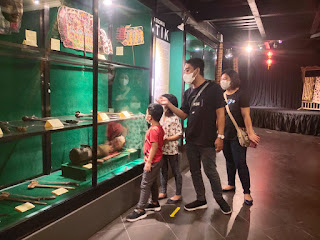Have you ever heard the word "Jodang"? Some
of the Javanese people may have heard the word. Jodang is one of the
historical relics in the History of Java Museum, Yogyakarta. When you visit the
History of Java Museum, this object is in the second aisle collection zone.
Getting to Know the Historical of Jodang
Javanese traditional cabinet or commonly called Jodang, is made of wood. Found in Madura, East Java, in the 18th century. Jodang is a place to keep valuables for the Javanese people, especially Madura with floral motifs. Like an old safe that was used to store valuables.
In addition, Jodang is also used for Javanese wedding customs. Jodang is usually used to bring the groom's offerings
to the bride. It usually contains market snacks, staples, or crops, depending
on the bride and groom.
There are many other historical relics in the History
of Java Museum, Yogyakarta. If you want to see the object directly, you can
visit the History of Java Museum, Yogyakarta. You will not lose if you visit
this museum, because, in addition to the low and affordable price, we will
learn a lot about the origin of the formation of the island of Java.
History Of Java Museum
Information & Reservation Center
W.a C.s.0857.4822.8300









































